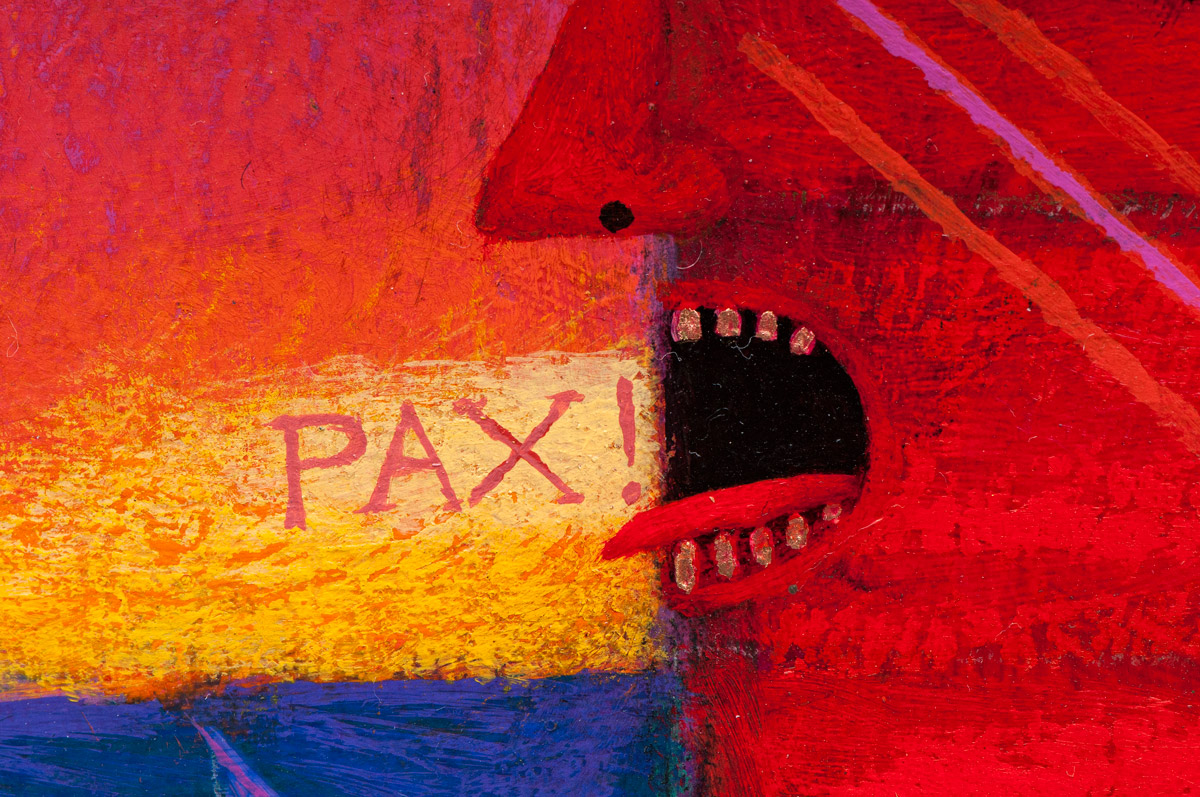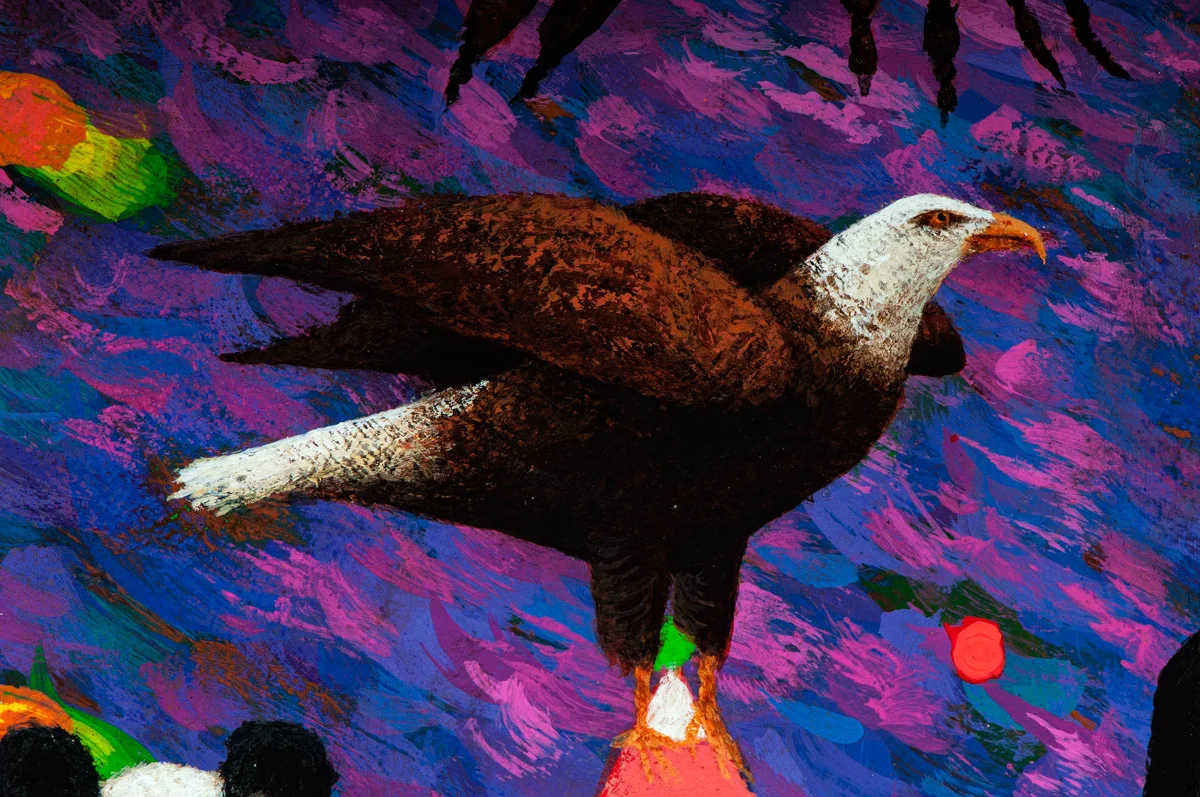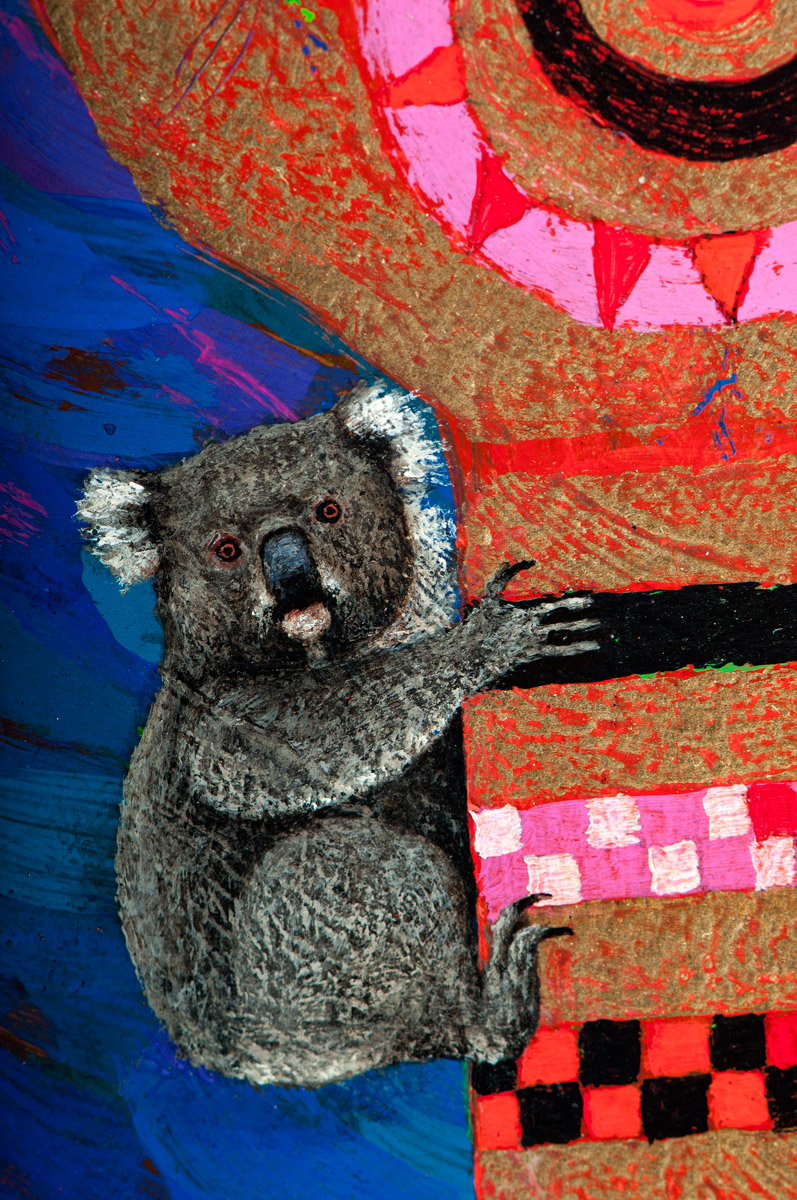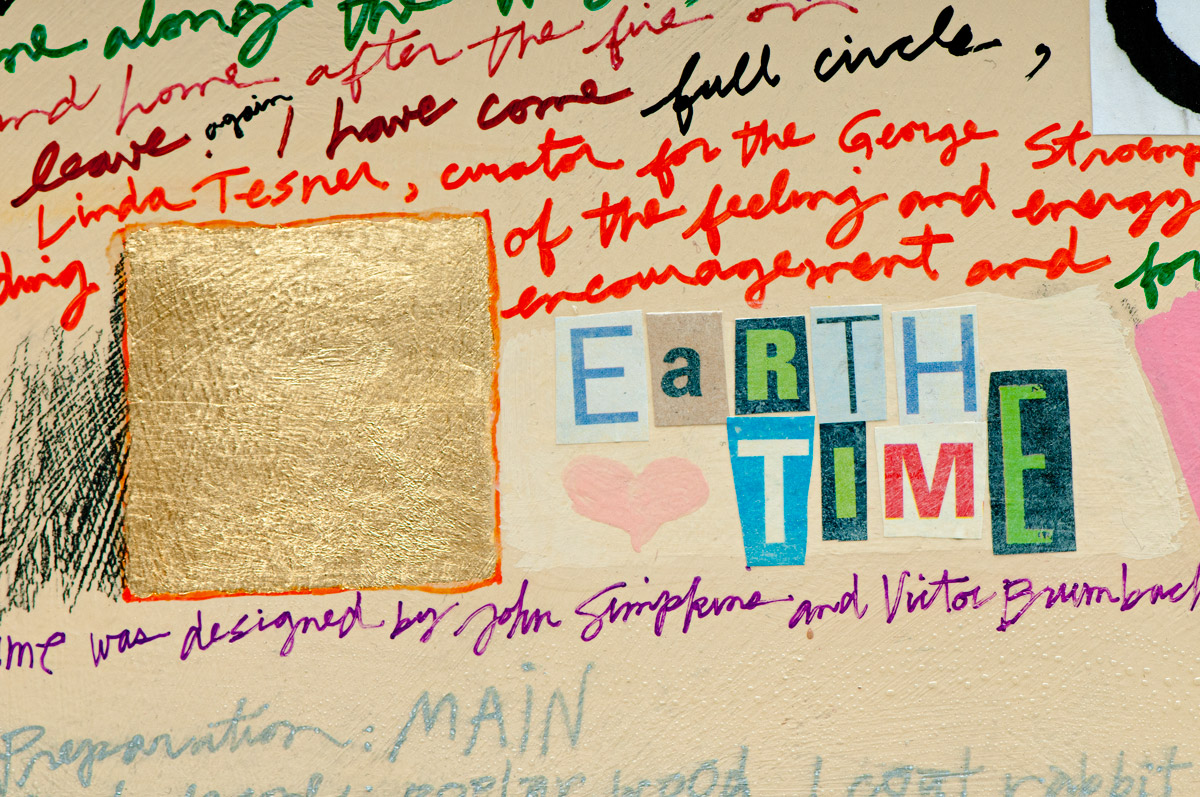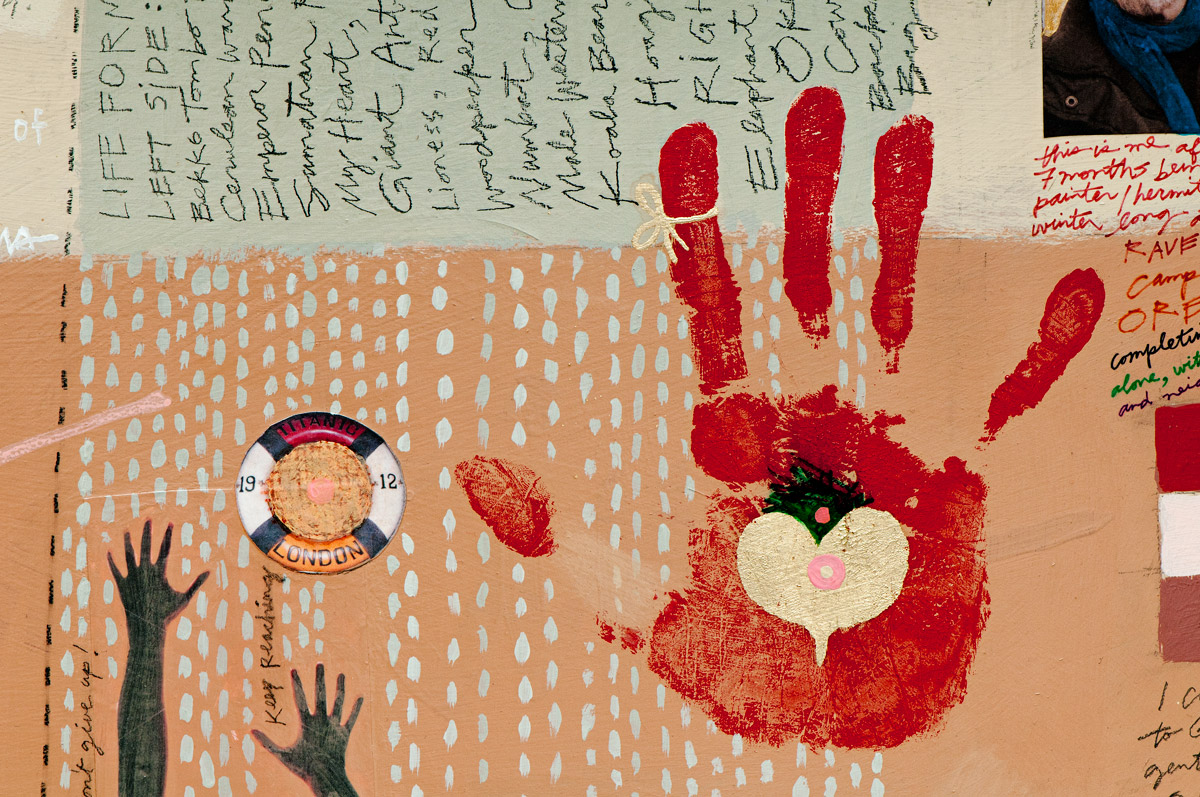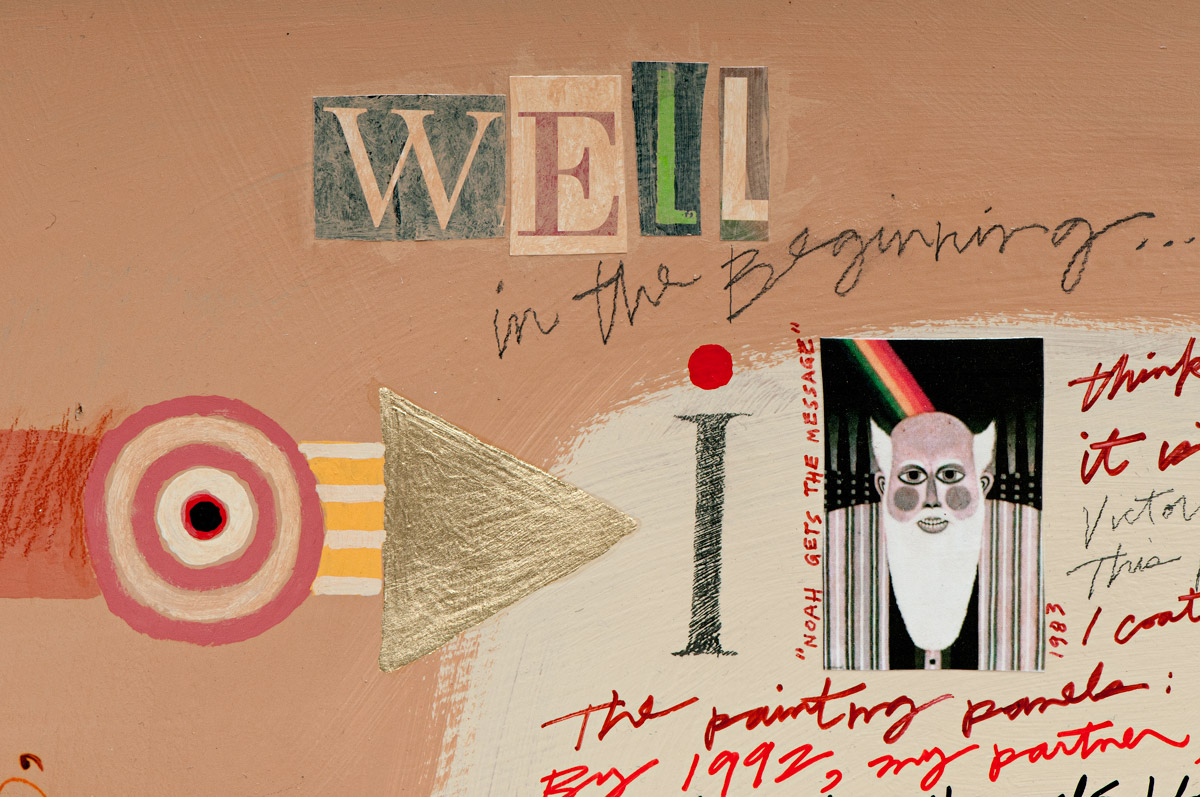The full front of "The Flood Triptych" in its open position with the center door open exposing the raven inside. The final opened piece measures eight feet wide by six feet high by eight inches deep.
In 1991, I was painting exclusively for George R. Stroemple who had been collecting my work for years. My partner, Victor Brumbach, was fascinated with sacred geometry, the mathematics often used in the construction of cathedrals, altars and icons, and together we created the concept for “The Flood” which would become a career-defining piece. The design was loosely based upon the tale of Noah’s Ark. George had the framework and panels made of Poplar wood and built to our specifications. With the main panel measuring 45 x 67 x 8 inches and the two side panels each measuring 20 x 67 x 2 inches, the completed piece when open measures eight feet wide, six feet high, and eight inches deep.
I carefully prepared the panels and frame using traditional materials: rabbit skin glue, gesso, casein and shellac. As I worked, Victor became increasingly ill with complications from the AIDS virus.
The Twin Towers as painted in 1999 on "The Flood Triptych."
Bass relief of the human figures in gold leaf in waves of water.
At some point, I wanted to add tears to the triptych in the form of rain. Using silver leaf, I created raindrops falling from the clouds; cobalt blue waves filled the rising waters surrounding the Ark, but still there were no animals. In 1999, I sold Ravenscroft, our beloved property in Camp Sherman, Oregon, the place that Victor and I had created together. I struggled to make ends meet and moved into a tiny stone room in the back of a friend’s house and rented a small studio space in the village of Sisters in which to paint.
Inspired by a powerful dream, I added a small island to the right-side inner panel with two tall twin towers made of gold leaf. a lightening bolt struck them from above. Two years later, the World Trade Center was struck by commercial jets on September 11, 2001. In 2002, I asked a cabinet maker to cut a doorway into the main panel where I had painted a door on the Ark. On the outer panels, I created a bass relief of floating human figures using many layers of gesso in preparation for gilding. From 2003 thru 2007, I traveled to China, Tibet, Nepal, Mexico, Thailand and Bali, following my heart and seeking my truth. Back in Oregon, I moved to a magical loft on top of a rocky ridge, just 6 miles southeast of Sisters, Oregon, an estate called “Aerie”. My spirit felt good there.
I commissioned Dougal Haines to create and install two small doors for the entrance of the Ark made from a Yew tree that had grown on the San Juan islands of Washington. Detailed tracings of animals for all three sections of the triptych were blocked in. Still, the spark was not there but I trusted it would be finished when the time was right.
In the fall of 2010, Aerie was sold at auction. Within a week of the sale, a forest fire burned through the property, coming within five feet of my studio there. The triptych and I were forced to move once again. I called the owners of Ravenscroft and asked if I could possibly return there to use my old studio space through the winter and into the spring. They agreed and so I came full circle. I moved back into my studio where the triptych was conceived. It felt right! I sensed strong support from Victor’s spirit; it was wonderful to be home again after 11 years of moving and travel. It was pure love!
Detail of the front doors of the Ark in their open position revealing the Raven, Earth and gold leaf inside.
I painted the animals, working 10 to 12 hours each day. Each life-form was a meditation, each one had something to say. Most of the animals in the triptych are endangered, a few are extinct, some are imaginary. On the inner panel, within the Ark, I painted a large black raven gently holding the Earth. My friend, Peach, a fire-dancer from Portland, is the only human figure in the painting, standing in the rain on the top deck of the Ark. Peach always reminded me to “believe” and to “let go”.
I commissioned Tad Williams of Portland to gild the triptych frame and outer doors in 24-carat gold. Seven months later, on April 30, 2011, the triptych was finally complete. It had been 20 years since it began. I watched as movers mindfully carried the triptych down narrow stairs to a truck, then to the photographer's studio for careful documentation, and finally to George Stroemple’s warehouse in Portland where it now awaits the possibility of public viewing.
The back documentation panel of The Flood contains a complete listing of animals and objects, a list of all colors used in the painting, the music most often listened to during its process, plus the story of the triptych from 1990 to its completion in 2011.
I wish to express my greatest appreciation to George R. Stroemple, for his extraordinary patience, understanding and support throughout the long process of this work.






